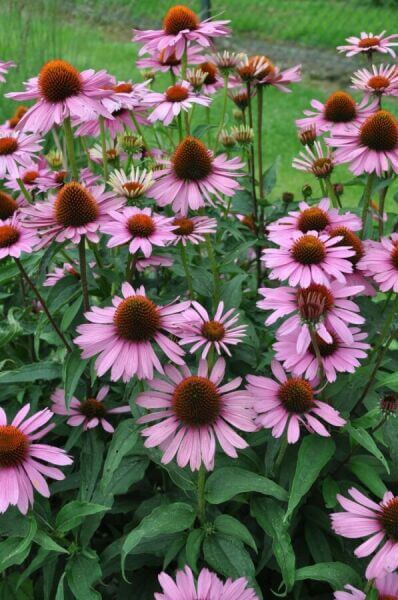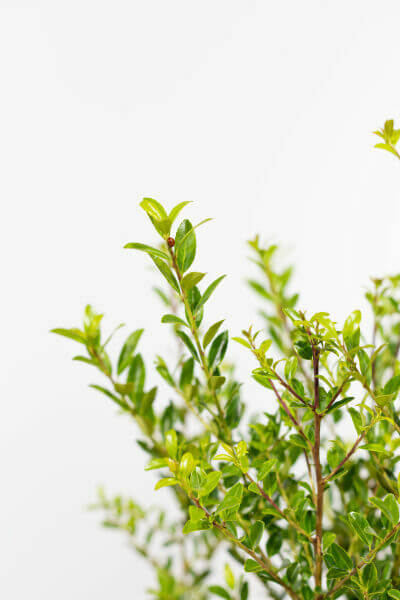Best Hedge Plants For Busy Roads
Hedge Plants For Garden Edges
Improve your garden's appeal with lush hedge varieties such as Yew (Taxus), Thuja, Laurel, Photinia, and Bamboo, commemorated for their structural integrity and ecological advantages.
Yew and Thuja offer evergreen protection and winter durability, while Laurel uses rapid growth and broad, aromatic leaves.
Photinia adds seasonal appeal with its lively red foliage, and Bamboo lends a low-maintenance, peaceful atmosphere.
These hedges improve air quality, minimize sound, and create tranquil, private areas.
Correct planting, spacing, and maintenance guarantee energetic growth and environmental consistency.
Check out how these lush varieties can elevate your garden's charm and wellness.
Key Takeaways
Change Your Garden With Lush Hedge Ranges
- Select Yew for its thick, evergreen growth and unrivaled durability.
- Go with Laurel for its quick development and broad leaves, ensuring quick privacy.
- Choose Photinia for its lively seasonal foliage, which turns a striking dark red.
- Utilize Bamboo for a low-maintenance, winter-hardy hedge with aesthetic appeal.
- Space plants 2-3 per meter and prune regularly for ideal growth and health.
Popular Hedge Plants
When transforming a garden with lavish hedge ranges, it's necessary to consider popular hedge plants such as Yew, Thuja, Laurel, and Photinia due to their unique qualities and benefits.
Yew (Taxus) is highly esteemed for its longevity and dense, green growth, making it a prime option for withstanding landscapes.
Thuja is noted for its evergreen foliage and robust winter durability.
Photinia adds seasonal vibrancy with red leaves that darken over time, creating vibrant visual appeal.
Laurel uses quick development and fragrant, broad leaves, ideal for quick personal privacy.
In Addition, Bamboo is an exceptional option for ambiance, offering a low-maintenance, winter-hardy option that boosts the garden's visual with its sophisticated, swaying walking sticks.
These choices deal with a variety of horticultural requirements and choices.
Benefits of Garden Hedges
Garden hedges offer a multitude of advantages, making them an important addition to any landscape. These natural barriers are affordable to implement and supply substantial wind security, improving air circulation and contributing to sound decrease. The thick foliage of hedges like Thuja and Beech ensures personal privacy by obstructing visibility, developing a remote and serene environment.
Hedges likewise play an essential function in microclimate policy, providing a steady environment that fosters plant development and lessens temperature variations. Their complex leaf structures filter pollutants, enhancing air quality and contributing to a much healthier garden community.
Additionally, hedges excel in sound decrease, taking in and deflecting acoustic waves to lower ambient noise levels. This double functionality of offering both visual and acoustic personal privacy enhances the total tranquility and aesthetic appeal of any garden.
Planting and Upkeep Tips
For a successful hedge, precise preparation of the planting location is crucial. Guarantee the soil has proper pH and drainage to support strong root advancement.
Space the plants appropriately for the selected types. Water the hedge often throughout its preliminary development phase, adjusting as needed with seasonal modifications.
Implement a systematic insect control and illness avoidance strategy, using chemical or natural treatments when necessary. Regularly examine for aphids, termites, and fungal infections.
Apply mulch to maintain wetness and reduce weeds. Seasonal pruning promotes thick growth and air circulation, important for plant health.
Following these guidelines will help you cultivate a dynamic, well-kept hedge that boosts the appeal of your garden.
Spacing and Cutting Standards
Spacing and Cutting Standards
Proper spacing and trimming are crucial for cultivating healthy, visually appealing hedges. Appropriate spacing ensures each plant receives sufficient nutrients, light, and air flow.
Follow these standards for optimal hedge maintenance:
- Spacing: Position hedge plants 2-3 plants per meter to encourage robust growth.
- Pruning Techniques: Regular pruning is essential for keeping wanted hedge height and shape. Cut new development in summer and cut back older wood during winter season.
- Seasonal Care: Change cutting schedules and techniques according to seasonal requirements to make sure plant health.
- Hedge Height: Routinely screen and trim to keep the wanted hedge height and accomplish uniform visual appeals.
Sticking to these steps will guarantee your hedge grows, boosting both the appeal and functionality of your garden.
Choosing the Right Hedge
Picking the Right Hedge
Choosing the appropriate hedge includes assessing elements such as fully grown height, foliage density, and ecological resilience. Effective hedge plant choice requires comprehending each types' development qualities and site-specific flexibility.
For instance, Yew (Taxus) provides excellent durability and dense development, while Thuja is notable for its winter season resilience. In addition, thinking about upkeep requirements is vital; fast-growing species like Laurel or Privet need routine trimming, whereas low-maintenance alternatives like Bamboo or Ivy might be preferable for those seeking very little upkeep.
Ecological factors such as soil type, light schedule, and moisture conditions must also direct the choice process. This mindful approach guarantees the picked hedges will flourish, providing both aesthetic and practical benefits to the garden landscape.
Shipment and Planting Recommendations
To ensure your hedge plants flourish, they need to be delivered by specialized couriers and planted immediately upon arrival.
Follow these essential steps for effective planting:
- Soil Preparation: Enrich the soil with raw material to enhance drain and nutrient material.
- Planting Depth: Create a trench twice the width and equivalent to the depth of the root ball.
- Watering Strategies: Water completely after planting, keeping the soil consistently moist but not filled.
- Mulching: Use a layer of mulch to retain moisture and reduce weeds.
Consumer Support and Service
Given the essential role of prompt help in horticultural pursuits, our consumer support group is readily available six days a week through telephone, email, and social media to provide professional guidance and quickly attend to any concerns. Their devotion to fast response times ensures customer complete satisfaction by dealing with inquiries associated with plant health, ideal planting techniques, and maintenance schedules.

Schedule
Within 24 hours
Within 24 hours
This thorough support group, reinforced by a stellar 9.3/ 10 client score, highlights our commitment to improving the gardening experience for each customer.
Often Asked Concerns
The Length Of Time Does It Consider Hedge Plants to Develop?
Hedge plants usually need one to 3 years to end up being totally developed, with the precise period varying by species and growing conditions.
Effective care throughout this important duration is necessary for robust development. Constant watering, watchful weed control, and suitable fertilizer application are critical in promoting strong root development.
For Additional info example, fast-growing types like Laurel might develop quicker, while slower-growing varieties such as Yew might take longer. Thorough upkeep speeds up the facility procedure, resulting in healthy and dense hedges.
What Are the Finest Hedge Plants for Personal Privacy?
The question of the best hedge plants for personal privacy includes assessing evergreen and deciduous options.
Evergreen hedges like Thuja, Laurel, and Cypress provide year-round coverage, ensuring constant personal privacy.
In contrast, deciduous hedges such as Beech offer seasonal personal privacy, shedding leaves in colder months.
Secret maintenance tips for personal privacy hedges include routine cutting, fertilizing in spring, and proper spacing-- normally 2 to 3 plants per meter.
Furthermore, consistent watering and thorough weed removal are vital for promoting healthy, thick growth.
Can Hedge Plants Draw In Wildlife to My Garden?
Yes, hedge plants can attract wildlife to your garden by supplying important benefits like shelter, food, and nesting websites, consequently enhancing regional biodiversity. For instance, yew, holly, and laurel are excellent for drawing in birds, while ivy supports a variety of bugs.
Nevertheless, it is necessary to keep in mind that there are some drawbacks, such as increased upkeep to handle pests and routine maintenance. Thoroughly choosing and preserving hedge ranges can help stabilize these downsides and benefits, eventually cultivating a vibrant and sustainable ecosystem in your garden.
Exist Any Blooming Hedge Plants Available?
Yes, there are flowering hedge plants available that can improve the appeal of your garden.
For example, Elaeagnus, also understood as Olive Willow, produces aromatic white flowers in the fall, including a touch of elegance.
Photinia, another popular choice, showcases dynamic red leaves that grow into an abundant green, creating a dynamic visual impact throughout the seasons.
To guarantee these plants prosper, it's vital to practice appropriate pruning methods and seasonal upkeep, such as cutting brand-new development in the summer and cutting back in the winter.
These steps will help preserve the health and visual appeal of your blooming hedges.
How Do I Prevent Bugs in My Hedge Plants?
To prevent bugs in hedge plants, use natural bug control methods and maintain appropriate hedge care. Present helpful pests like ladybugs, which prey on harmful insects, to produce a well balanced community.
Frequently check your hedges for signs of infestation and immediately get rid of any afflicted parts to avoid the spread. Make sure the health of your hedges by using well balanced fertilizers and supplying adequate water.
Utilize mulching to retain soil moisture and appropriate spacing to decrease plant tension and promote robust development. These practices collectively help in minimizing pest problems and preserving a healthy hedge.
Conclusion
In essence, choosing the right hedge ranges such as Yew, Thuja, and Laurel can transform any garden into a relaxing haven. These plants provide year-round plant, boost aesthetic appeal, and offer practical advantages like sound reduction and wind defense.
Appropriate planting methods, accurate spacing, consistent watering, and seasonal cutting are vital for optimum growth.
Reputable delivery services and skilled client assistance guarantee a smooth experience from purchase to planting, making it simpler than ever to raise your outdoor area.
Garden hedges provide a multitude of benefits, making them an important addition to any landscape. These natural barriers are economical to implement and offer significant wind security, improving air circulation and contributing to sound reduction. The thick foliage of hedges like Thuja and Beech makes sure privacy by blocking visibility, developing a secluded and peaceful environment.

Pruning Strategies: Routine pruning is essential for preserving wanted hedge height and shape. Cut new growth in summer season and cut back older wood during winter.